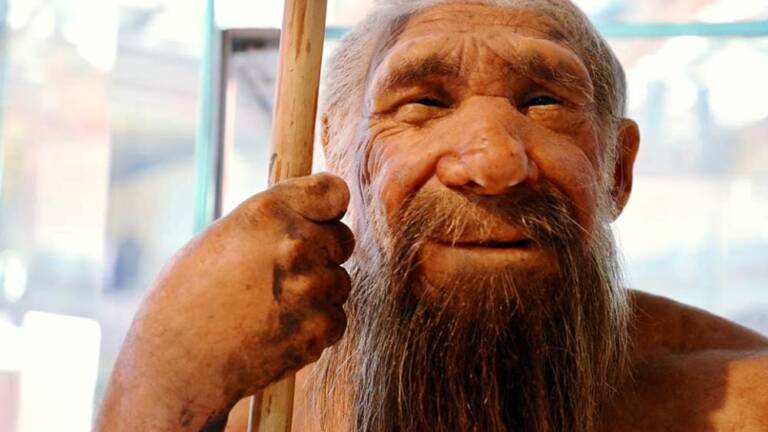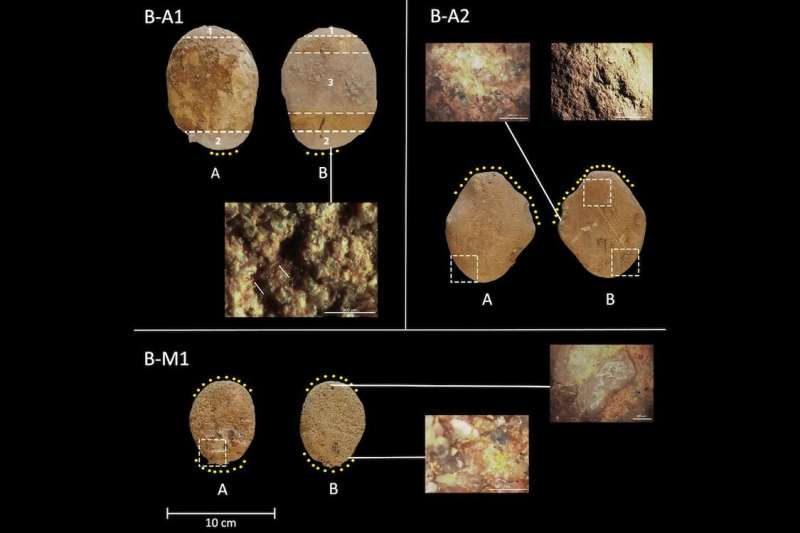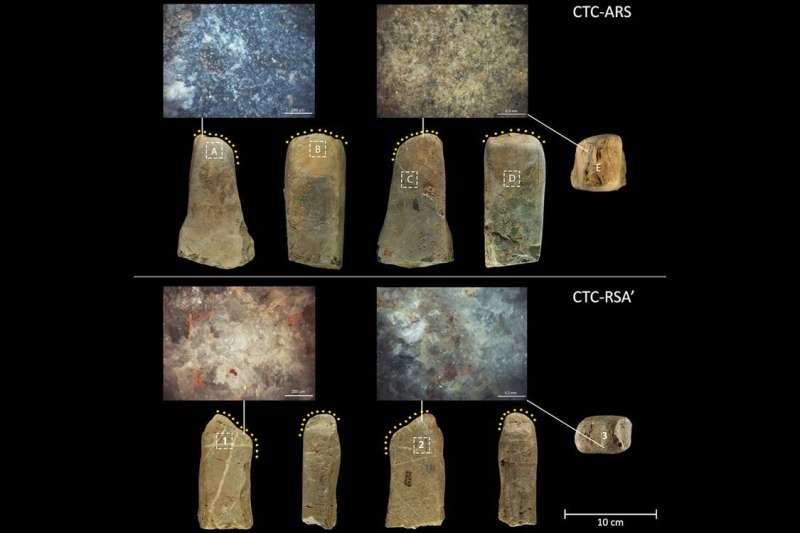The first millers were the Italian Homo Sapiens and Neanderthals

Analysis of tools unearthed in Italy and dated between 39,000 and 43,000 years ago suggests that modern humans and Neanderthals were producing flour in the region several thousand years earlier than previously thought, according to a statement released by the University of Montreal. and that probably the first millers were Italian Sapiens and Neanderthals.
International research team member Julien Riel-Salvatore of the University of Montreal explained that the millstones and pestles in the study were found in Neanderthal strata at the Riparo Bombrini site in northern Italy and at the modern human site of Grotta of Castelcivita, which is more than 900 km away in southwestern Italy. The tools in both locations show traces of use.
"This pushes back the earliest evidence of plant processing and flour production by several thousand years," said study co-author Julien Riel-Salvatore, a professor at the Université de Montréal who chairs the anthropology department.
A pestle from Riparo Bombrini, a site in northern Italy that my University of Genoa colleague Fabio Negrino and I have been working on for over 20 years, shows that Neanderthals also engaged in this behavior, which is something entirely new. , to our knowledge". "So this is an important discovery."
The Neanderthal-Homo sapiens period was characterized by the coexistence of Late Mousterian (Neanderthal), Uluzzian and Protoaurignacian (H. sapiens) techno-complexes in the northwest and southwest of present-day Italy.
The millstones come from two Palaeolithic sites about 1,000 km apart on the Tyrrhenian side of the peninsula: Riparo Bombrini, in the archaeological area of Balzi Rossi in Liguria, and Grotta di Castelcivita, at the foot of the Alburni massif, in Campania . this shows that the production of flour from wild cereals was widely practiced in Italy, both by the Sapies and by the Neardenthalensis.
On the surface of the millstones of both sites, starch granules with different morphologies were found, testifying to the use of different plants, including wild cereals, by the humans who inhabited the areas at that time. So the Paleolithic Italians were skilled gatherers who then ground and reduced the collected cereals to flour.
A celebration of spreading knowledge
The evidence of similar grinding practices in both contexts underlines how some technological knowledge and eating habits were widespread in both populations, perhaps as an inheritance already present within the two different cultural traditions or perhaps as a result of effective contact between the two groups.
The millstone of the Mousterian levels of the Riparo Bombrini constitutes the oldest European example of processing and transformation of vegetable products in Europe and shows the Neanderthals engaged in this practice. The two pestles from the Protoaurignacian levels of the site show that modern humans, who occupied the site less than a millennium later, also adopted the same behavior.
Two millstones found at the base and at the top of the Protoaurignacian sequence of the Castelcivita Cave not only have a similar morphology, but also present intentional modifications to make them more functional. This shows how the use was by now so widespread that there was an evolution in stone working techniques.
Coordinated by the Italian Institute of Prehistory and Protohistory within the PLUS_P (Plant Use in the Paleolithic) project, the study involved researchers from the Universities of Florence, Genoa, Ravenna and Bologna, as well as the Cyprus Institute (in Nicosia) and the 'UdeM.
"Turning grain into flour is an important innovation because it allowed Paleolithic foragers to store and transport food more easily," Riel-Salvatore said. "Pushing this behavior so far back really changes how we think about how these highly mobile people lived."

Thanks to our Telegram channel you can stay updated on the publication of new articles from Economic Scenarios.
The article The first millers were the Italian Homo Sapiens and Neanderthals comes from Scenari Economici .
This is a machine translation of a post published on Scenari Economici at the URL https://scenarieconomici.it/i-primi-mugnai-erano-gli-homo-sapiens-e-neanderthal-italiani/ on Fri, 07 Jul 2023 19:41:50 +0000.


